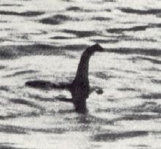
Contact

Home
The History of Yowie-Research
Yowie / Bigfoot
1987
SCEPTICISM OF SCIENCE FAILS TO FADE A MADNESS FOR MONSTERS
By: Peter Fray
Sydney Morning Herald (NSW)
Date: October 12, 1987
Page Number: 2
Australian zoologists who study unknown and often mythical animals have to be a hardy bunch. They have to be adept at handling bad news - and its messengers.
And, the weekend's news from Loch Ness, where the most exhaustive search for the famed monster ended with its leader declaring Nessie a myth, has not stopped them in their tracks.
In fact, belief in a host of creatures - including the Yowie, the Tasmanian Tiger, the Moolyeewonk, marsupial lions and panthers, and a collection of giant sea snakes, wombats and sharks - remains as strong as ever.
Mrs Doris Blinman, from Kangaroo Valley, said nothing would alter her belief in the district's famed marsupial panther, which she claims to have seen at regular intervals since 1954.
"I used to say I'm a nut, but so many different people have seen it now that I know it exists," she said. "The panther is very black, beautiful and strong, and it has a lingering smell and big golden eyes."
Mrs Blinman said a local councillor had recently seen the panther. It regularly visited her property, often leaving its footprints and scent near the house.
Mr Rex Gilroy, a self-taught naturalist and director of the Australian Unknown Animals Investigation Centre at Katoomba, is equally unmoved by the failure to find Nessie.
"Loch Ness is a big place with plenty of deep water and bays which would be hard to search," he said. "There is no reason why a plesiosaur like Nessie could not be surviving in the world's oceans."
Mr Gilroy, 43, is convinced that several animals, considered mythical or extinct, are in fact living in remote parts of Australia. These include:
The Moolyeewonk, a plesiosaur, similar to Nessie, with a long neck, a large body and two sets of flippers. It has been spotted several times in the upper reaches of Hawkesbury River and off the NSW and Queensland coasts.
The Yowie, a shy, man-like ape, technically known as the giganto pithecus. According to Mr Gilroy, yowies inhabited Australia before the Aborigines and still survive in dense, inaccessible scrub in several States.
The Tasmanian Tiger, a marsupial with a striped rear half. The last tiger died in Hobart Zoo in 1934, but since then there have been numerous sightings, mainly in Tasmania and south-west Western Australian. Mr Gilroy said he believed a colony of tigers still exist in the State forest north of Katoomba
The marsupial lion or panther. This creature, which once roamed many parts of Australia, is believed to exist in several parts of NSW, including Kangaroo Valley.
Giant sea snakes, sharks and wombats. Such creatures have been "spotted" in most parts of Australia.
The science community remains unmoved. Dr Mike Archer, an associate professor of zoology at the University of NSW, said most mythical creatures were created by "wish fulfillment" and an over-imaginative mind.
"There is a phenomenal amount of bullshit," he said. "People are so gullible and they don't need a scrap of scientific evidence. None of these animals amaze me, they're a product of people who want to believe they exist."




The History of Yowie Research
Rex Gilroy Mike Archer







